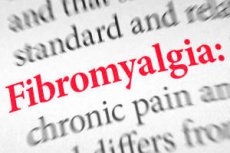New publications
First fibromyalgia drug in 15 years: FDA approves sublingual 'non-opioid' taken once daily at bedtime
Last reviewed: 23.08.2025

All iLive content is medically reviewed or fact checked to ensure as much factual accuracy as possible.
We have strict sourcing guidelines and only link to reputable media sites, academic research institutions and, whenever possible, medically peer reviewed studies. Note that the numbers in parentheses ([1], [2], etc.) are clickable links to these studies.
If you feel that any of our content is inaccurate, out-of-date, or otherwise questionable, please select it and press Ctrl + Enter.

The U.S. Food and Drug Administration (FDA) has approved Tonmya, a sublingual cyclobenzaprine hydrochloride tablet, for the treatment of fibromyalgia in adults. It is the first new drug for this indication in more than 15 years and the first non-opioid analgesic in its class to be administered once daily at night. The approval is based on two Phase 3 studies involving nearly 1,000 patients, where the drug significantly reduced daily pain compared with placebo over 14 weeks of treatment; the proportion of people with clinically meaningful pain reduction (≥30%) was also higher with Tonmya. In terms of safety, across the combined Phase 3 dataset (more than 1,400 patients), the most common adverse events were mouth numbness/discomfort, unusual taste, somnolence, mouth burning/pain, fatigue, dry mouth, and aphthous ulcers. Approval received on August 15-20, 2025 and confirmed by specialized news platforms.
Why is this important?
Fibromyalgia is a chronic “widespread pain syndrome” of fatigue, sleep disturbances, and “brain fog” that affects more than 10 million people in the United States, about 80% of whom are women. To date, the FDA has approved only three drugs for fibromyalgia—duloxetine, pregabalin, and milnacipran (the latter was approved in 2009)—and many patients have reported limited efficacy and tolerability with the available options. The advent of a new mechanistic approach and a nonopioid agent designed to be taken at night to target nonrestorative sleep (one of the root causes of pain and fatigue in fibromyalgia) is a significant shift in clinical practice.
How does the drug work?
Tonmya is a sublingual form of cyclobenzaprine with rapid transmucosal absorption; it should be taken at bedtime once a day. Rather than “just pain relief,” the approach is aimed at normalizing sleep, which in fibromyalgia often remains shallow and “not restful” - and it is poor sleep that fuels pain, fatigue and cognitive complaints. In a key study (RESILIENT), the drug not only reduced pain, but also improved sleep and fatigue scores on validated questionnaires (PROMIS).
What clinical trials have shown
In two randomized, double-blind, phase 3 studies (RELIEF and RESILIENT), nearly 1,000 patients received sublingual cyclobenzaprine or placebo for 14 weeks. Results:
- Primary objective (pain): significant reduction in average daily pain with Tonmya compared to placebo by week 14; the effect began to manifest itself already from week 1 and was maintained until the end of the course.
- Clinically meaningful response: More patients achieved ≥30% pain reduction with Tonmya than with placebo.
- Secondary outcomes: improvement in sleep quality, fatigue severity and subjective sleep assessments; statistical significance was confirmed (P < 0.001).
- Safety: The tolerability profile was generally favourable; local effects in the mouth and somnolence were predominant. Serious adverse events were rare and comparable to placebo.
How Tonmya differs from the “old” approaches
- New class for fibromyalgia: This is the first drug approved for this indication in 15+ years; previously, the “three” (duloxetine, pregabalin, milnacipran) covered the spectrum, but not for everyone.
- Sleep as a target: Tonmya specifically targets non-restorative sleep, whereas existing options primarily modulate pain transmission/monoamine pathways.
- Sublingual platform: The sublingual route allows rapid access to the bloodstream and low nighttime doses, which may impact efficacy and tolerability compared to “old school” oral muscle relaxants.
Who it might suit (and what to look out for)
- For patients with leading sleep complaints: if night awakenings, “unrested” mornings, daytime fatigue dominate, the new option logically fits into the “fix sleep - reduce pain” strategy.
- For those who did not respond to/were poorly tolerated by the “old” drugs: a non-opioid drug with a different focus has appeared, which can be combined with non-drug therapy (aerobic exercise, CBT-I, etc.).
- It is important to know about side effects: local reactions in the mouth and drowsiness are possible; the patient should be warned about them and their behavior before bedtime should be adjusted (do not drive after taking the medicine, etc.).
Where is the caution and open questions here?
- Not a 'silver bullet': in one of three phase 3 trials the effect on pain was greater but not statistically significant - as with many analgesics in fibromyalgia, the variability in response is high. 'Real world' data needed.
- Place in algorithms: It remains to be seen whether Tonmya will be a first-line or “add-on” for patients with sleep disorders. Full instructions for use and updated clinical recommendations are expected.
- Availability: Media reports say market launch is expected in Q4 2025; pricing/insurance details will become clearer closer to launch.
What does this change for doctors and patients right now?
- Reframe the treatment goal: assess and treat sleep as a central target in fibromyalgia, not as a secondary symptom.
- Discuss combinations: Tonmya + non-drug methods (aerobic exercise, CBT, sleep hygiene), possibly with “old” drugs if they helped partially.
- Set realistic expectations: the effect is assessed after 4-8 weeks, the ultimate goal is pain reduction and improved daytime functioning, not “complete disappearance” of symptoms.
Context: A quick reference on approved therapies
- Previously FDA approved: pregabalin (2007), duloxetine (2008), milnacipran (2009). Now Tonmya (cyclobenzaprine SL, 2025) has been added to the list.
- What has often been used off-label: Low doses of tricyclics/cyclobenzaprine at night have been used for sleep and pain management, but without the “approved for fibromyalgia” status. The new formulation effectively legitimizes this route as a registered nighttime drug.
